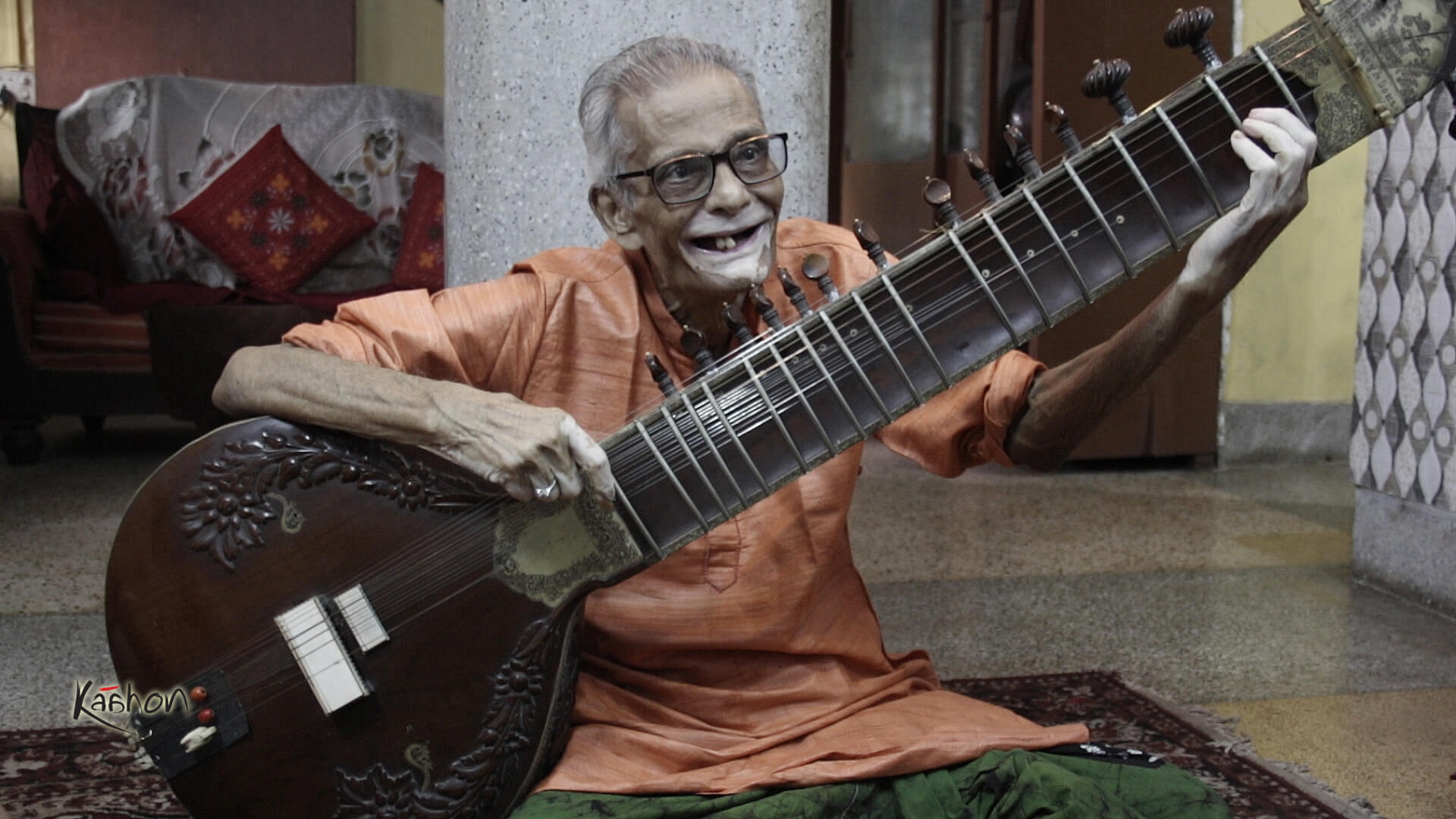Pandit Santosh Banerjee was born in British occupied India on 24th November 1931. He came from a rich cultural heredity and traditional backgrounds. Being drawn towards music from a very tender age, he quickly generated a deep liking for Indian Classical Music. He took up Sitar during his teen years. After learning from the famous Sitar artist Aparesh Chatterjee for some time, he became the disciple of virtuoso veenkar Ustad Md. Dabir Khan Saheb. This association with Ustad Khan Saheb lasted almost 25 years. Being his ‘Ganda Bandh’ pupil; upon his death Ustad Saheb passed the torch of legendary Rampur Senia Gharana to Pt. Santosh Banerjee. He became a virtuoso of ‘Dhrupadi-baaz’ on Sitar and a very rare instrument called ‘Surbahar’. Now he remains the only artist to play the traditional Veena baaj of Surbahar. His music is fused with emotion and romanticism while maintaining the traditional purity of the style.
He headed the department of Instrumental Music at Rabindra Bharati University for a long time. He gave innumerable lectures in many Universities, both in India and abroad. Since 1955 he has played in various prestigious music concerts, he also played in National Programme of Music of All India Radio and Doordarshan for a long time. Being very successful in his home country he has extensively toured European countries such as France, Germany, Italy, and Switzerland.
He has also been a very profound teacher. Despite the industrious musical career, he has managed time to prepared a number of students who are now carrying forward the torch of Rampur Senia Gharana.
Pandit Santosh Banerjee talks about the initial days of his musical journey, his natural inclination towards Indian classical music and how that inspired the chain of events that eventually led him to learn from two great teachers; later of which became his inseparable musical ally afterwards. He talks about the conditions of his younger days, stressing upon systematic learning, and the inceptive days of his very long and industrious musical career. He was apt to pinpoint the reasons for the modern decay in musical culture. He takes us through his transition from a student into a teacher and after that, he goes on to talk about the intricacies of Veena and how it is associated with Surbahar. He shared the history of the instrument Surbahar and the different styles of playing it while demonstrating the difference between them. He also shares a fascinating anecdote of his first encounter with the instrument.
He shared his views of why Surbahar has seen a gradual decline in a number of Veena Aang players while the Sitar Aang counterparts thrived, citing the difficulties of learning Veena, and it being restricted to Senia Gharana as primary reasons. He stresses upon the particularity of the nature of an instrument. Smt. Sahana Banerjee, who was also present during the sessions demonstrated how these two styles of playing Surbahar vary in nature, and how different Gharanas have adopted it in a different fashion. She also gives us a brief account of the creation and the evolution of Sitar over the course of time, while doing so she burst al misconception abbot Amir Khusrow and how the great Sufi poet is often wrongly attributed to the creation of Sitar, while it’s his namesake who lived several centuries later happens to be the true father of Sitar.
The Guru himself laments about not having enough Gurus left, he points strongly towards the economic conditions that we are going through and how it has become increasingly difficult for students to pursue art purely in the vicinity of the alluring presence of western capital. He talks about how music has slowly become a way of getting popular easily and a way of earning money.
Sahana Banerjee contributed her views on how modern parents are pushing their children to shinier outlets rather than having them learn properly from traditional Gurus, how this tendency of promoting one’s own children has created a charade of glamour and fame which in turn has been pestilential to the culture of music in India. Music, as she claims, has become secondary to many people which have given rise to the tendency of taking shortcuts with which she leaves a strong appeal of proper respect and recognition towards the Gurus and our long-standing culture of music.